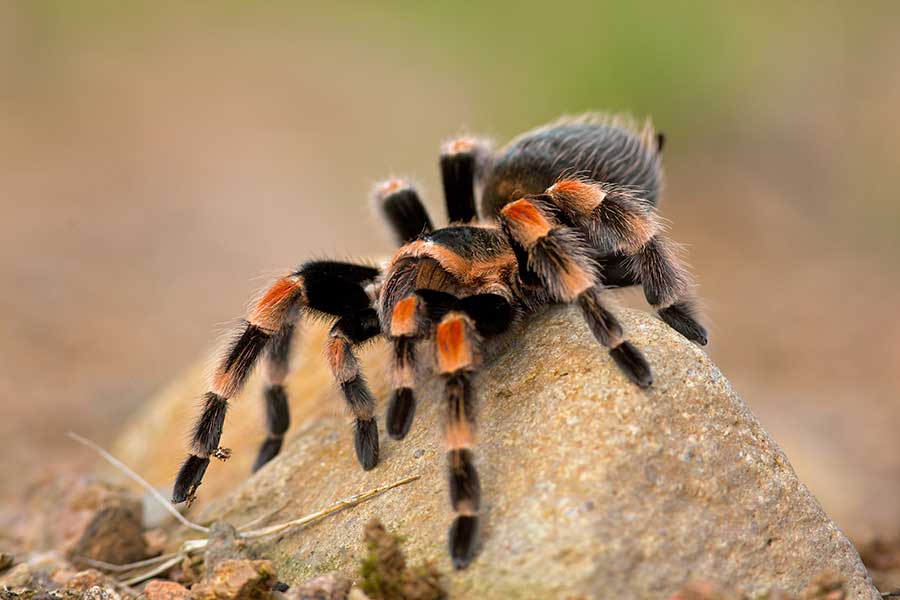Ever wondered what it’s like to share your space with an eight-legged companion? Let’s delve into the intriguing world of tarantula care with the help of this Tarantula care sheet – introducing their unique behaviors, and the responsibilities that come with owning one of these fascinating arachnids.
Learning More About Spider Biology
To truly care for your tarantula, it helps to understand the basics of spider biology. Tarantulas, like all spiders, have a crucial role in maintaining ecological balance by controlling insect populations. Learning about their anatomy, feeding habits, and molting process can deepen your appreciation for these incredible creatures.
Molting
One of the most intriguing aspects of tarantula biology is molting. These arachnids shed their exoskeletons as they grow, revealing a larger, more vibrant version of the spider. It’s a delicate process that requires a secure and stress-free environment. Witnessing your pet spider emerge from its old exoskeleton is a moment all tarantula enthusiasts eagerly anticipate.
Feeding Habits:
Tarantulas are skilled hunters, relying on their silk webs and stealth to catch prey. Understanding their feeding habits and providing a well-balanced diet is essential for their health and well-being.
Behavior and Temperament
Have you ever met a creature that can be both mysterious and mesmerizing? Tarantulas fit the bill perfectly. These arachnids, known for their hairy appearance and impressive size, have a range of behaviors. From the slow, deliberate movements of some species to the lightning-fast agility of others, each of them has its own unique personality.
Patient
One remarkable aspect of tarantula behavior is their patience. These spiders are masters of waiting, be it for prey to wander into their web or for the perfect moment to make a move.
From Flicking Hairs to Calmness
Some tarantulas have a fascinating defense mechanism – they can flick irritating hairs when threatened. It’s a unique display of self-defense, however, with proper care and understanding, most of their kind become surprisingly calm and tolerant of their human caretakers.
How to Care for a Pet Tarantula
Now that we’ve peeked into the intriguing world of arachnids, let’s dive into the nitty-gritty of tarantula care. Creating the perfect habitat, providing the right diet, and addressing their unique needs are crucial steps in ensuring your eight-legged friend thrives in captivity.
Choosing the Right Enclosure
Selecting the appropriate enclosure is the first step in arachnid care. From terrariums to glass enclosures, the choices are vast. Ensuring proper ventilation, substrate for burrowing, and hiding spots and climbing structures for mental stimulation are the key factors in recreating a habitat that mirrors their natural environment.
Temperature and Humidity: Mimicking Nature
Tarantulas are sensitive to temperature and humidity changes. Maintain temperatures between 75°F to 85°F. Adjust humidity levels based on the species, generally ranging from 70% to 80%. Researching the specific needs of your pet species will guide you in creating an environment that mirrors their natural habitat.
Feeding
Feeding your arachnid pet is not just about tossing in a cricket and calling it a day. It is crucial to understand their prey preferences, portion sizes, and feeding schedules. Offer a varied diet including crickets, roaches, and other small insects. Adjust portion sizes based on the spider’s size and age. Proper nutrition contributes to their growth, longevity, and overall vitality.
Responsibilities of Owning a Tarantula
Owning a tarantula is not just a hobby; it’s a responsibility. From ensuring their physical well-being to creating an enriching environment, being an arachnid owner requires commitment and attention to detail. Let’s explore the responsibilities that come with sharing your space with these fascinating creatures.
Health Checks and Observation
Regular health checks are crucial for detecting any signs of illness or stress in your tarantula. Observing changes in behavior, monitoring eating habits, and being attentive to the molting process contribute to proactive care and early intervention if needed.
Creating a Stimulating Environment
They may not be as interactive as traditional pets, but they still benefit from a stimulating environment. Adding elements like climbing structures and hiding spots enhances their physical and mental well-being. It’s about creating an environment that nurtures their natural behaviors.
Understanding Lifespan and Reproduction
Each species has a distinct lifespan, and understanding this aspect is essential for long-term care. Additionally, if you have a male and female tarantula, learning about the reproduction process is crucial. Responsible ownership involves being prepared for the various stages of their life cycle.
Key Takeaways
Caring for your arachnids is all about understanding their behavior, creating a suitable habitat, and embracing the responsibilities of ownership as it leads to a rewarding experience. By immersing yourself in the intricacies of tarantula biology, you pave the way for a thriving and captivating companionship with these remarkable arachnids. Remember that the mysteries of tarantula care unfold best through patience, observation, and a genuine passion for these eight-legged wonders.
